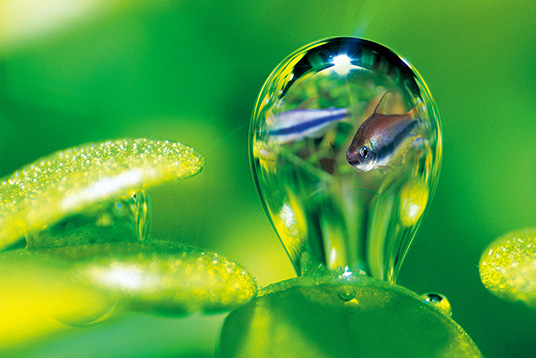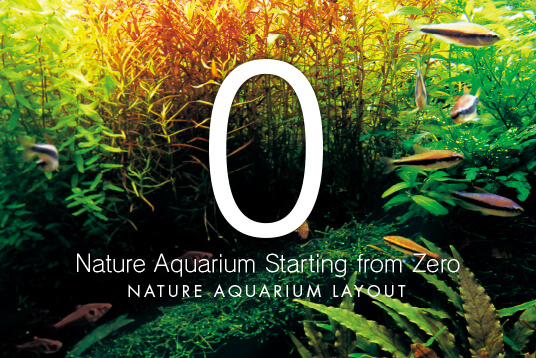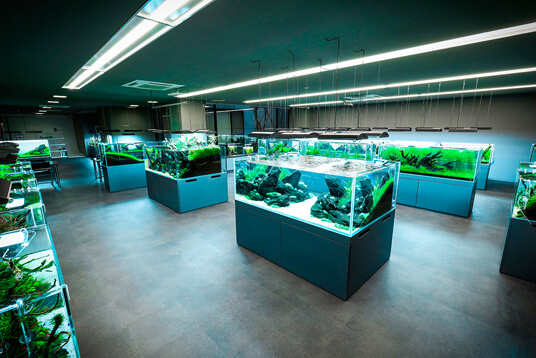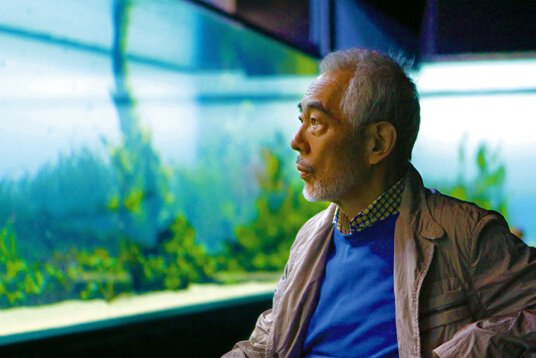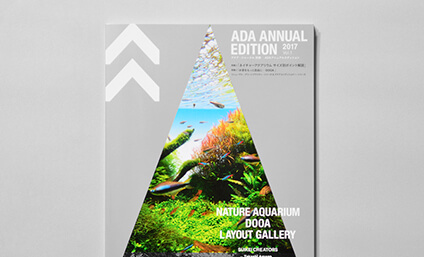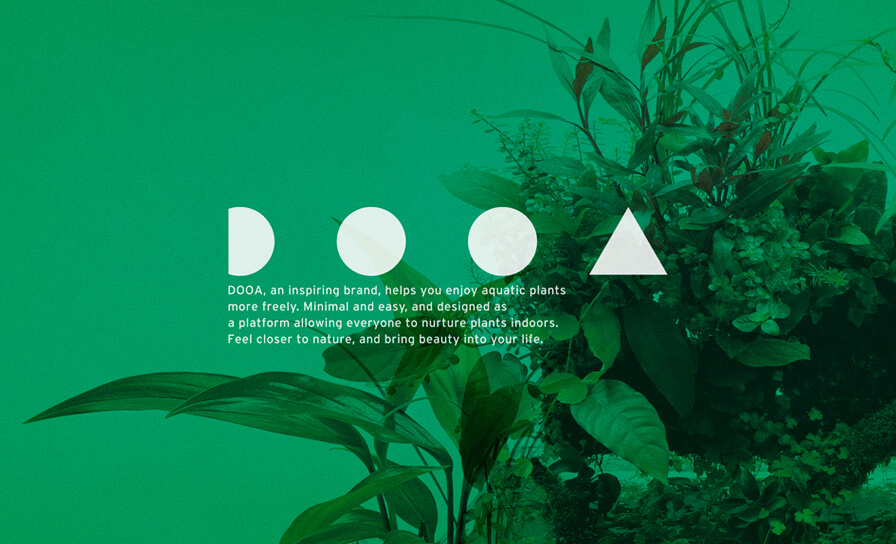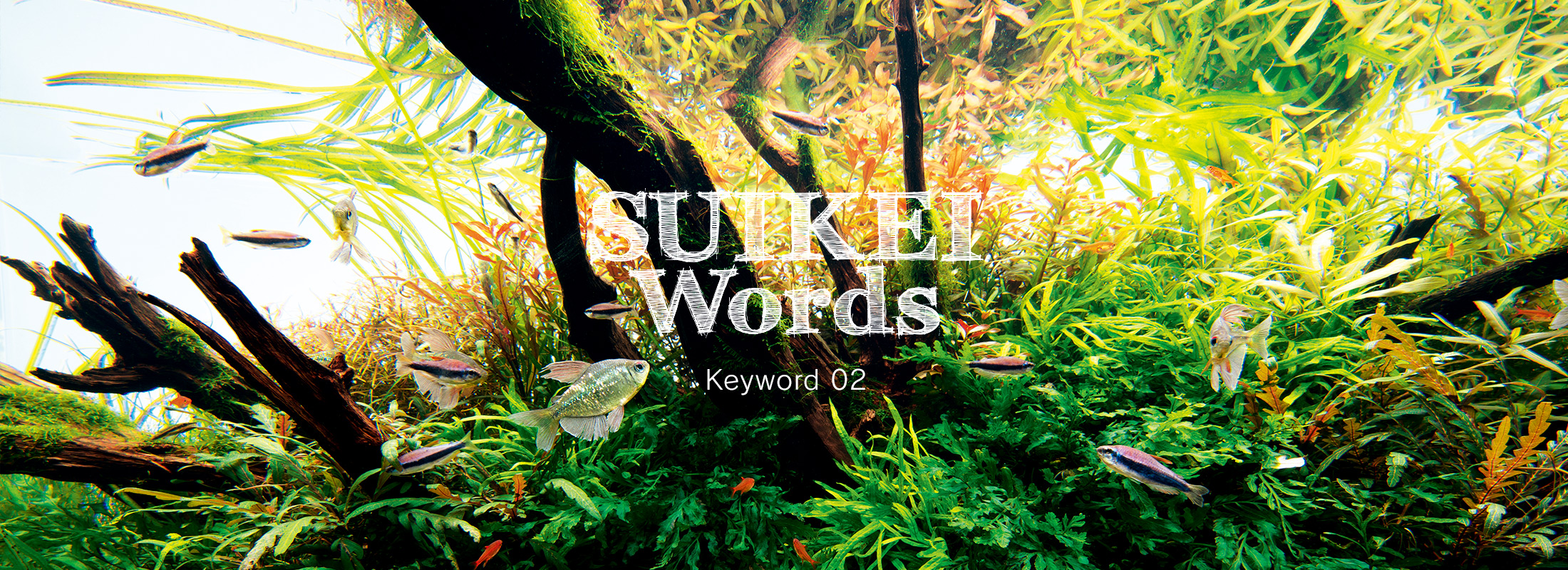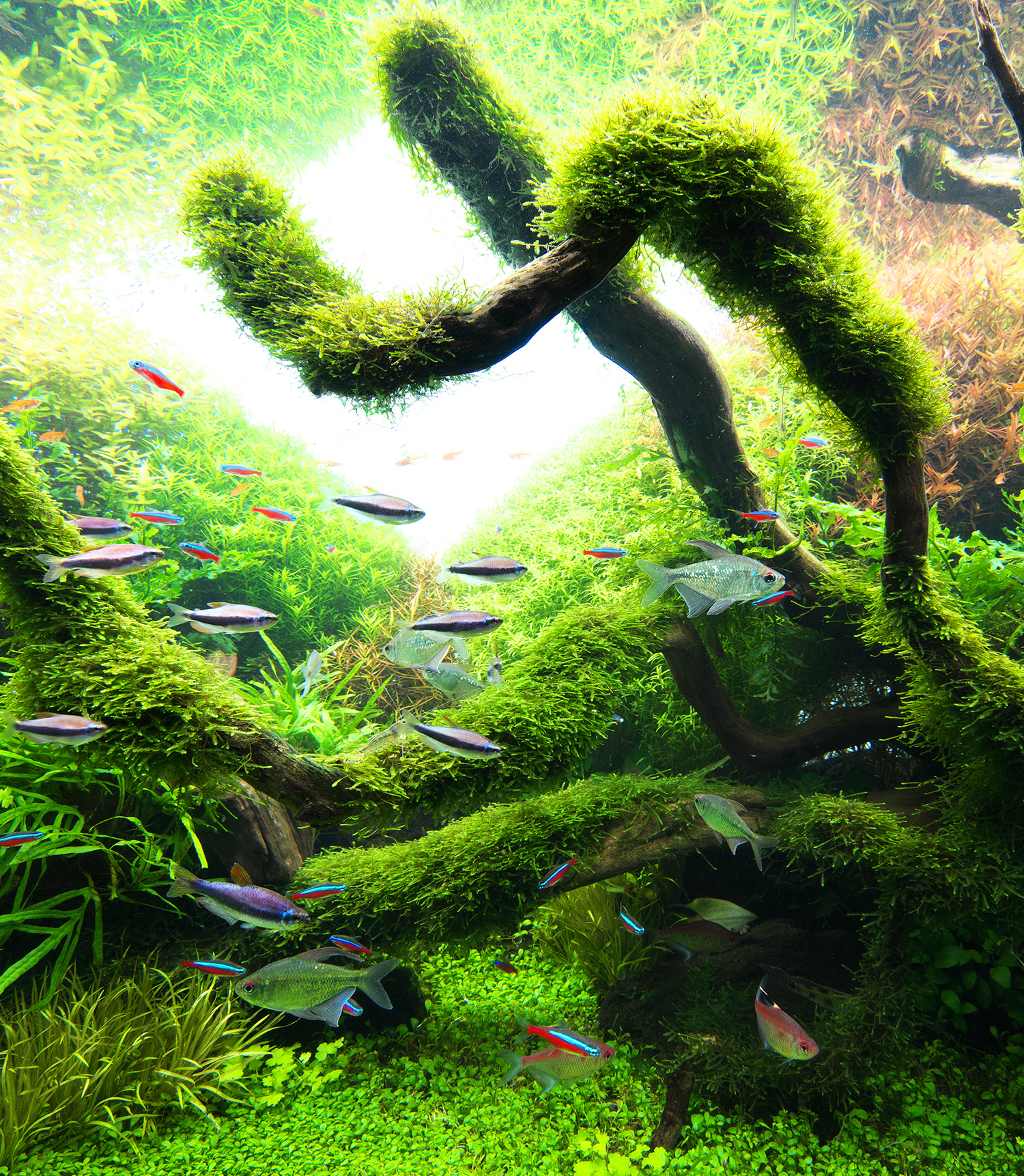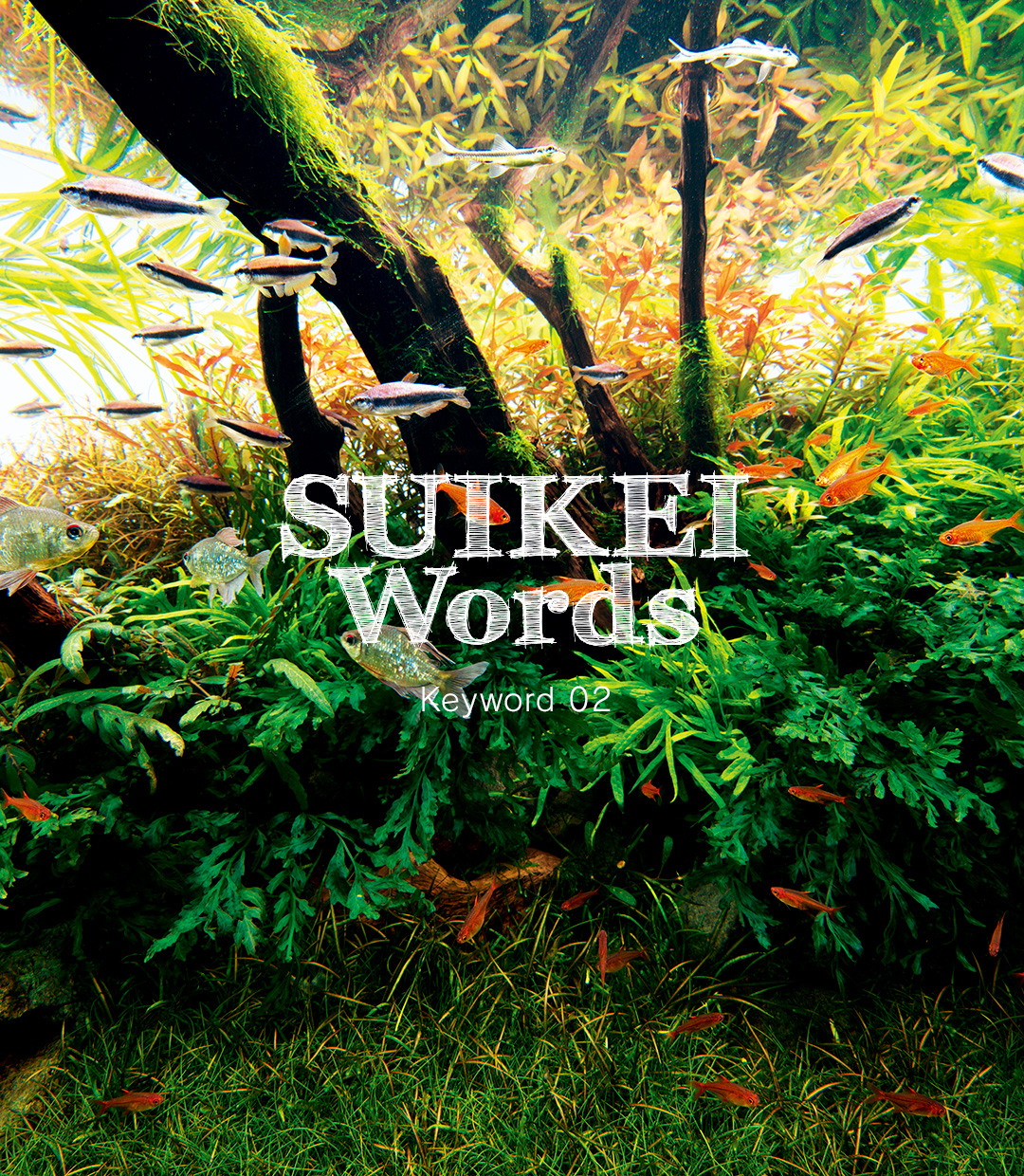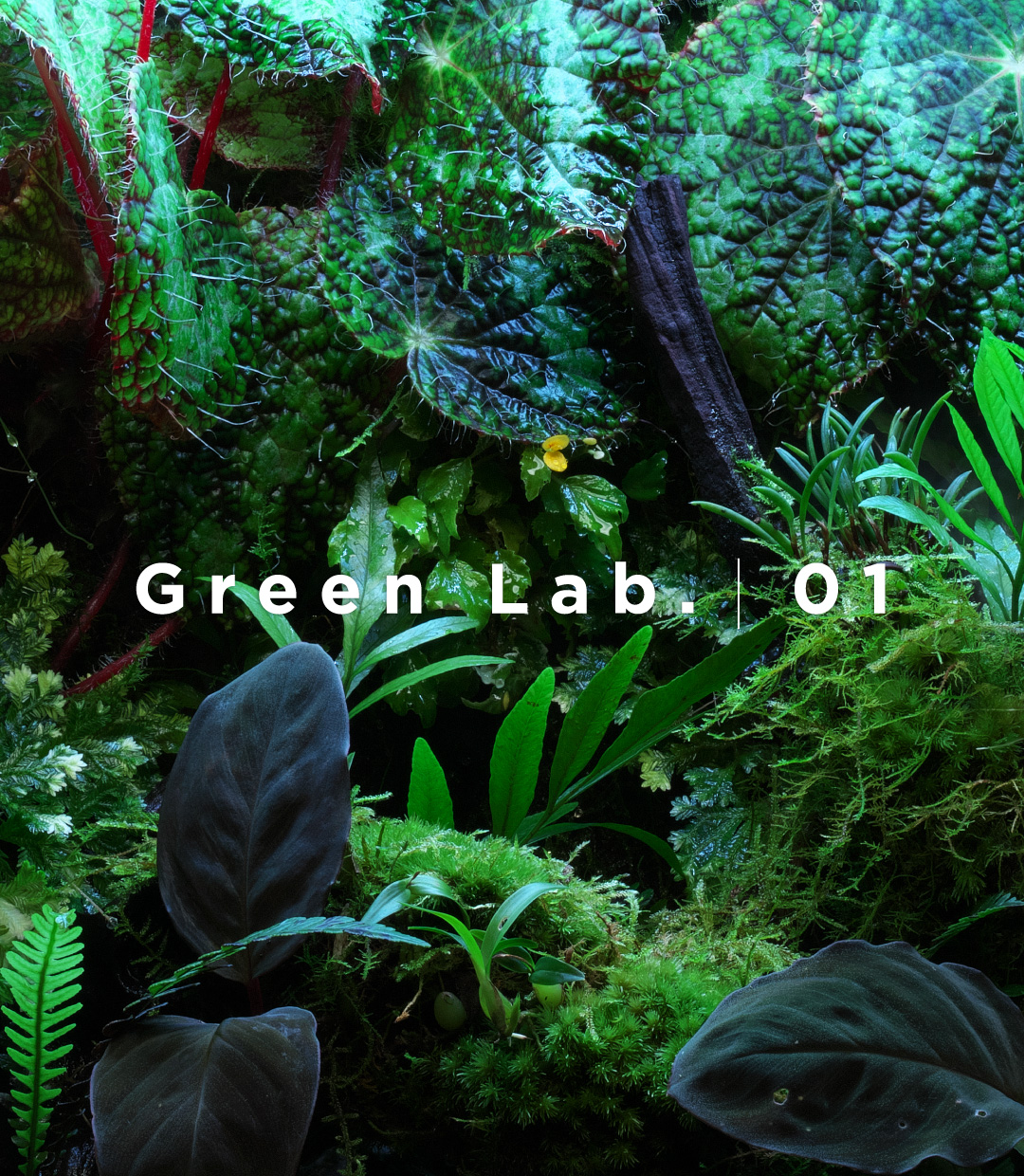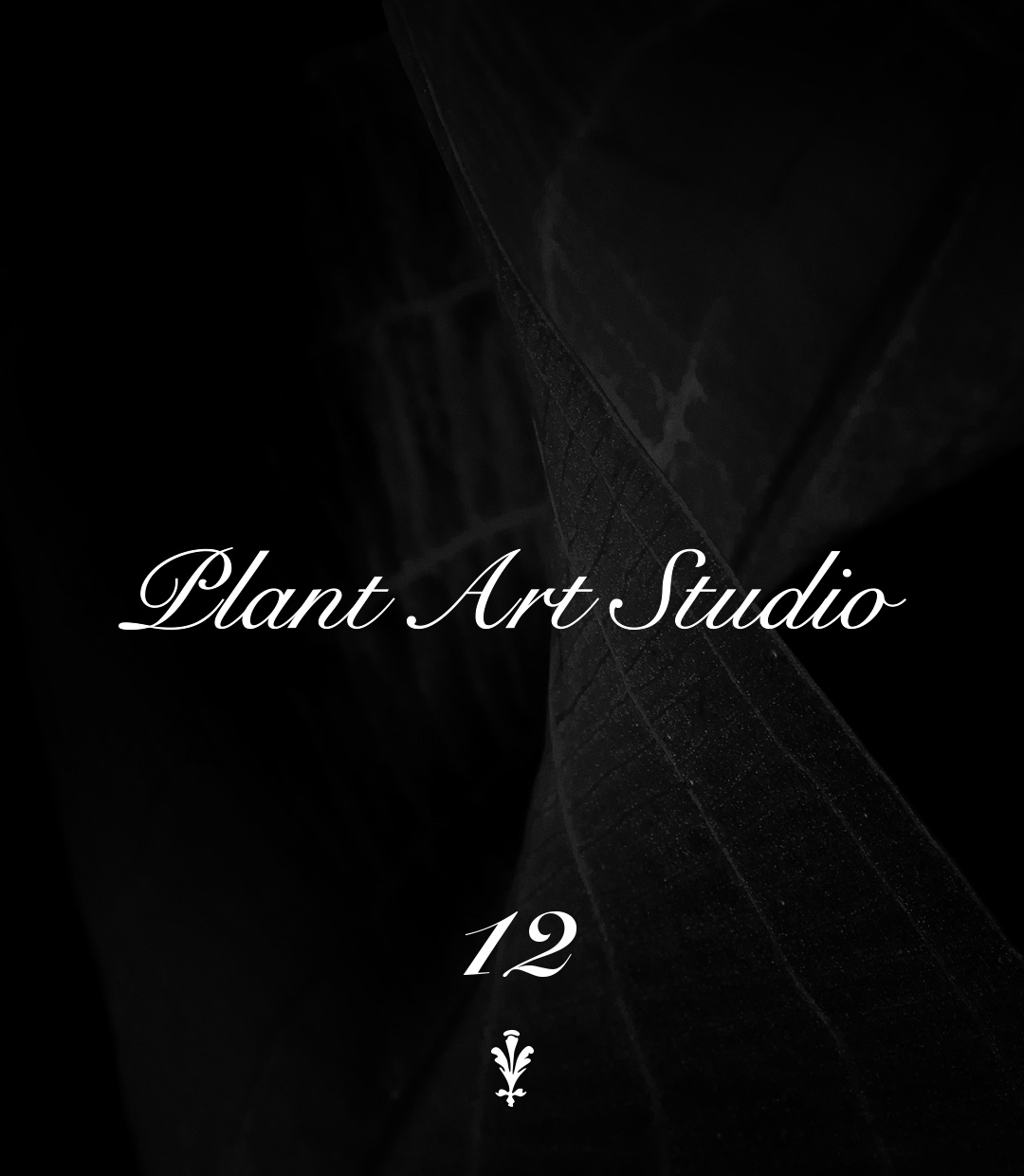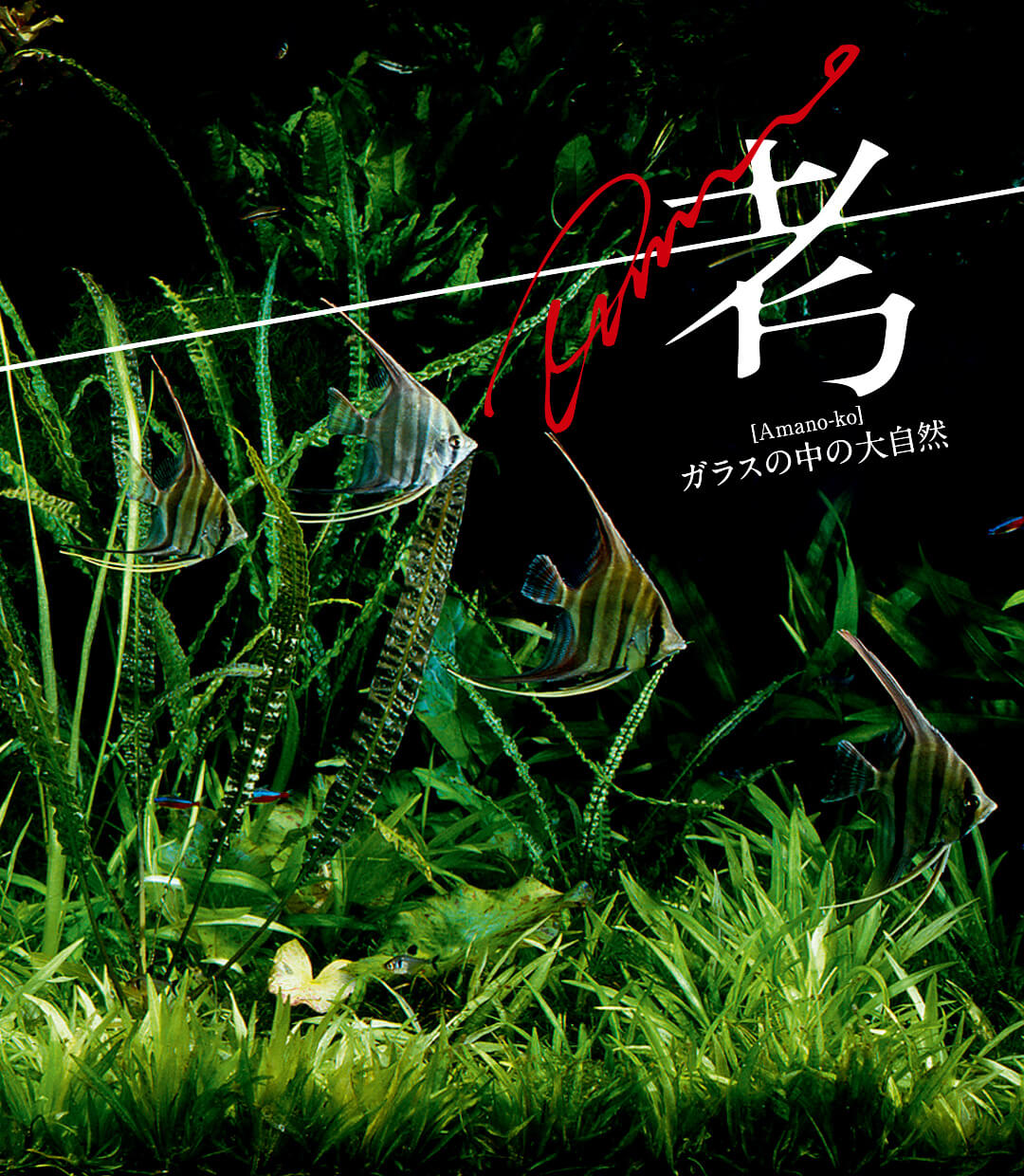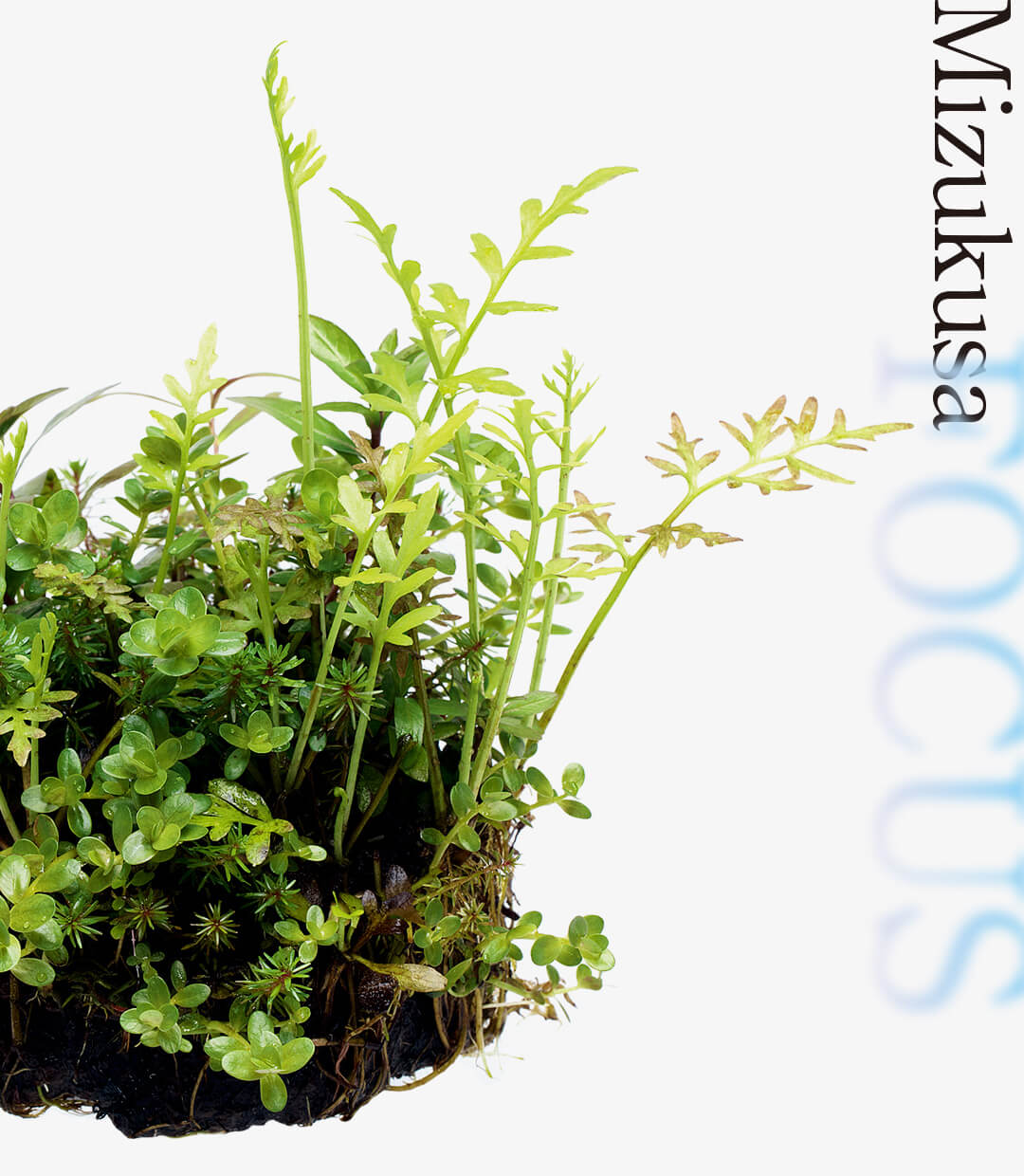SUIKEI WORDS Keyword 02 ‘Layout composition – Driftwood’
To design beautiful aquascapes, there are basic points to bear in mind.
In this column, the Suikei creators will explain and illustrate each point as a keyword.
Let’s deepen our knowledge of aquascaping!
In this column, the Suikei creators will explain and illustrate each point as a keyword.
Let’s deepen our knowledge of aquascaping!
Giving a sense of direction and flow to the tank is the key to create a beautiful layout. You can enjoy your aquascape for a long time by indicating the direction of water flow, which gives movement to the aquascape and keeps it from looking bland. With a driftwood layout, various different expressions can be produced by arranging driftwood branches in a way that makes the most of their size and shape.
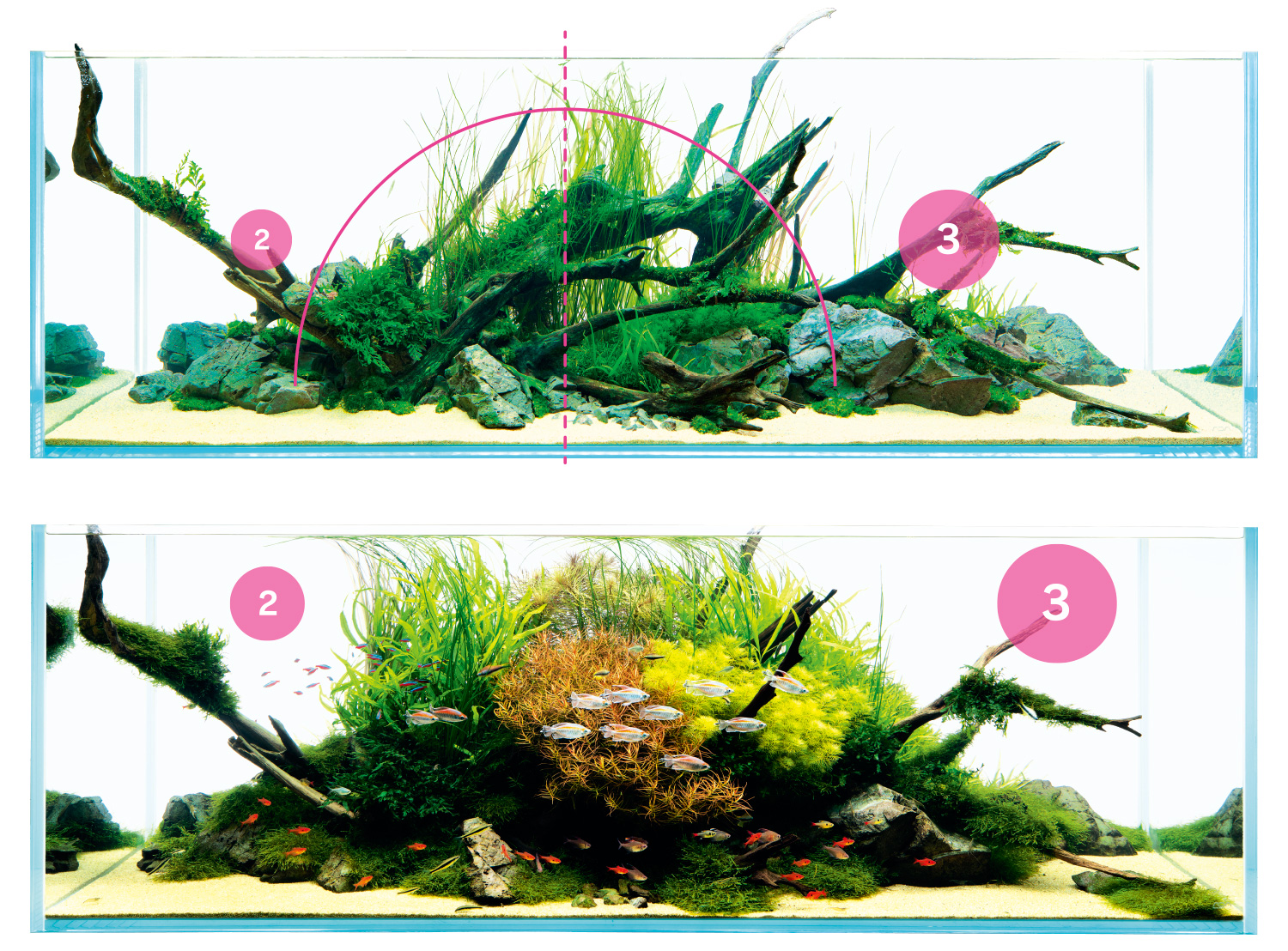
Convex composition – Place thick and dense aquatic plants in the center
A stable composition with the planting position in the center. Place the centerline of the thriving plants at roughly 2/3 of the tank’s length, according to the rules of the golden ratio. Planting should be done in a way that the ratio of the open spaces on both sides will be also in a ratio of 2:3 when plants are fully grown.
A stable composition with the planting position in the center. Place the centerline of the thriving plants at roughly 2/3 of the tank’s length, according to the rules of the golden ratio. Planting should be done in a way that the ratio of the open spaces on both sides will be also in a ratio of 2:3 when plants are fully grown.
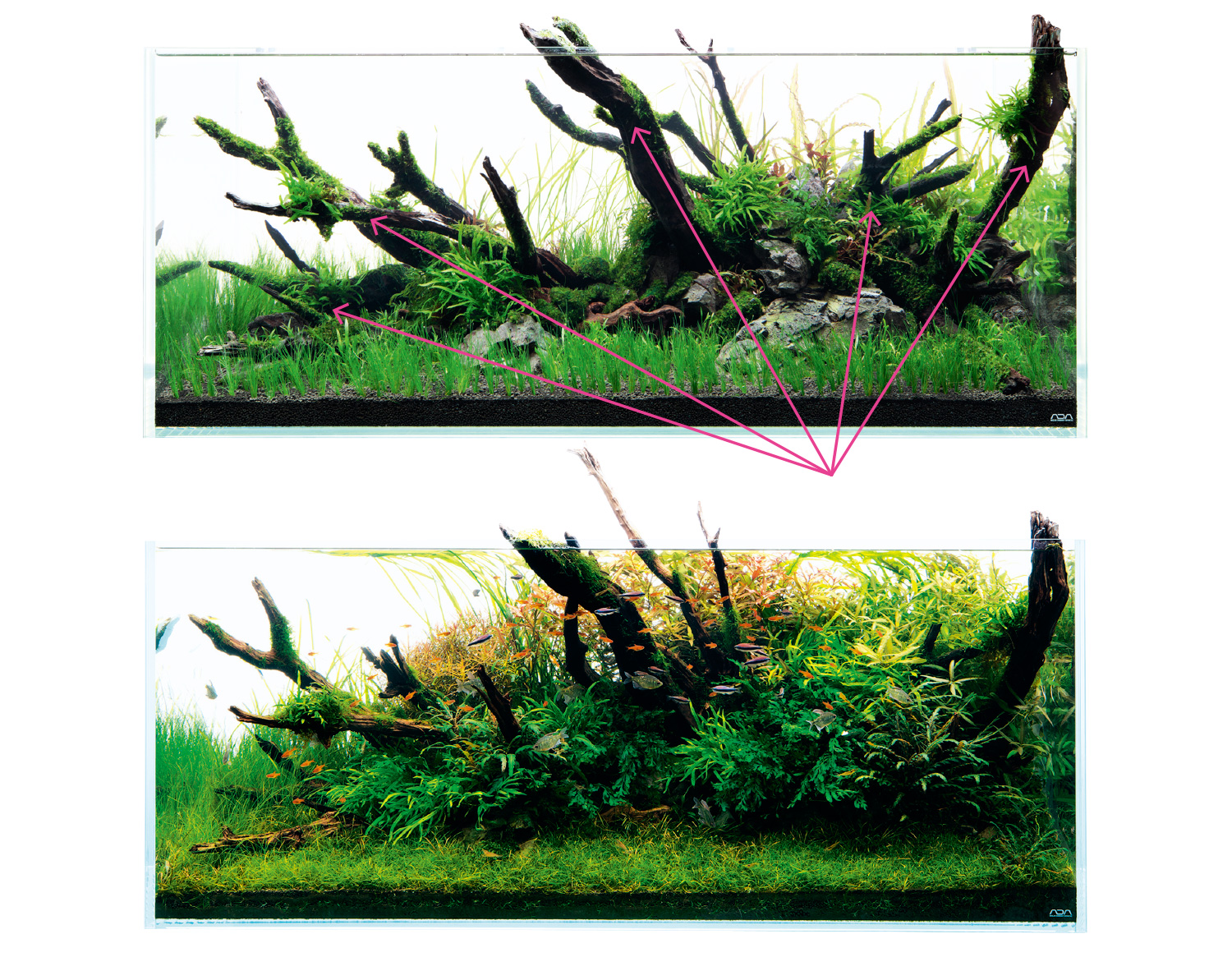
Radially arranged driftwood – Take into account the balance of spaces between branches
Arrange your driftwood branches as if drawing radial lines from a preselected point.
To create a sense of depth, place large pieces on the front and small pieces on the back, and then determined their balance. The key point here is to avoid placing large pieces of driftwood parallel to one another.
Arrange your driftwood branches as if drawing radial lines from a preselected point.
To create a sense of depth, place large pieces on the front and small pieces on the back, and then determined their balance. The key point here is to avoid placing large pieces of driftwood parallel to one another.
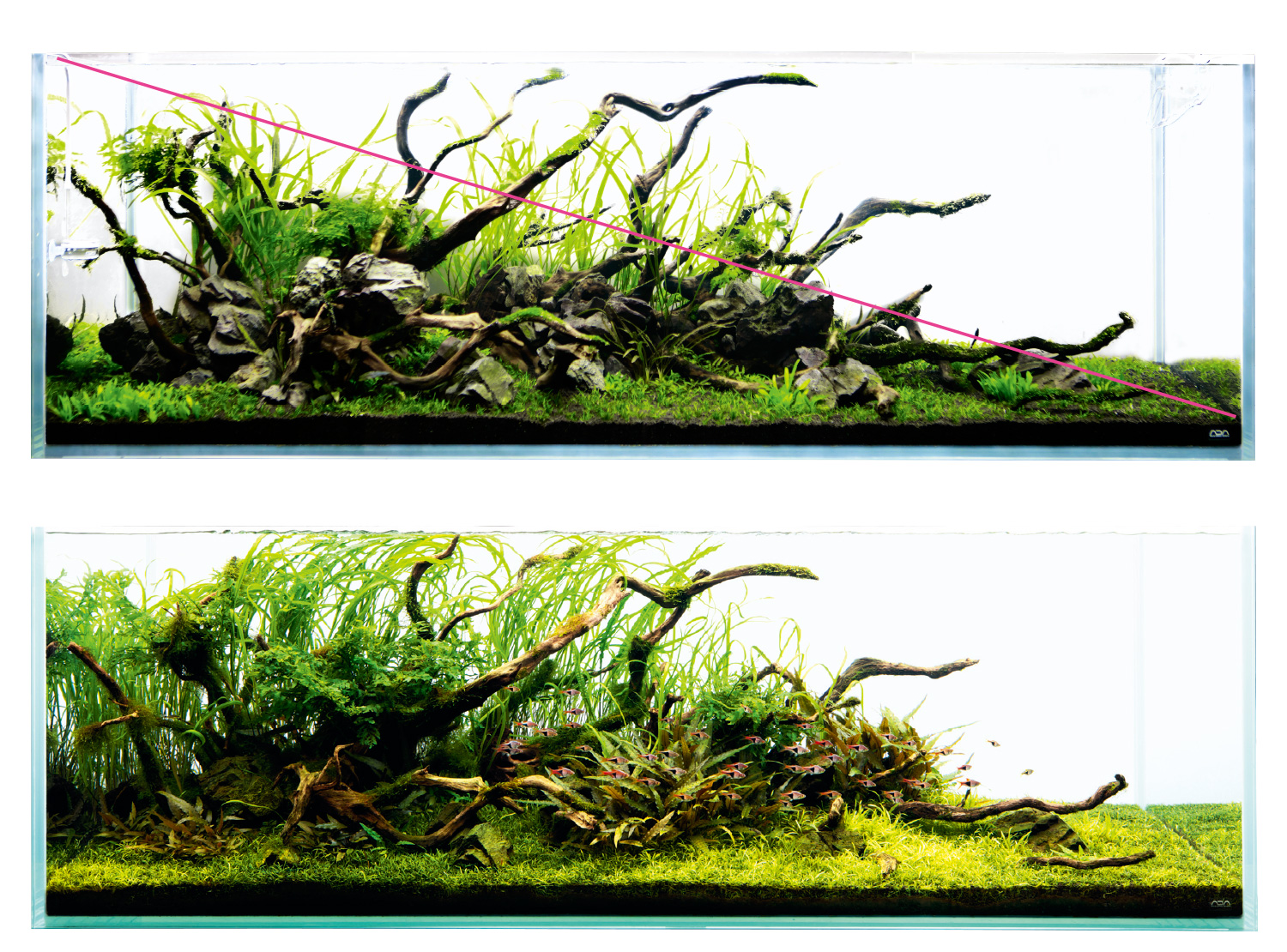
Triangular composition – Draw a right-angled triangle
This composition has a large opening extending through the upper section on either side of the tank, and it draws a diagonal line across the tank. The aquascape will nicely blend in with the room when the opening is created in accordance with the room layout where the tank is installed; e.g., when the left side of the tank is facing a wall, create a composition diagonally downward to the right.
This composition has a large opening extending through the upper section on either side of the tank, and it draws a diagonal line across the tank. The aquascape will nicely blend in with the room when the opening is created in accordance with the room layout where the tank is installed; e.g., when the left side of the tank is facing a wall, create a composition diagonally downward to the right.
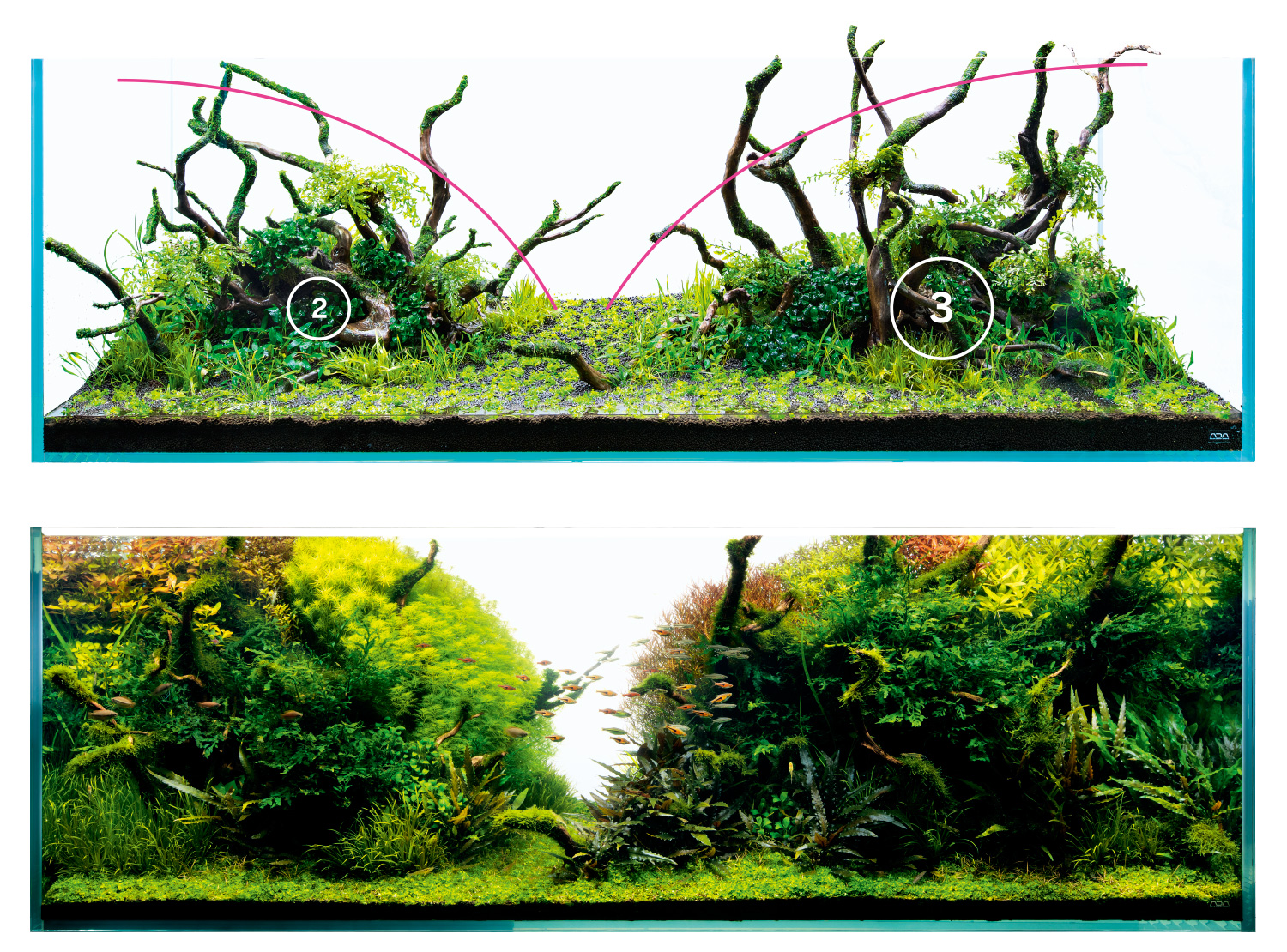
Concave composition – Make an opening in the center
It’s an easy-to-make composition with the bushes of aquatic plants on both the right and left sides. The aquascape will look balanced by making the size of the bushes with a ratio of 2:3, keeping asymmetry in mind. A perception of depth can be easily achieved because of the opening created in the center.
It’s an easy-to-make composition with the bushes of aquatic plants on both the right and left sides. The aquascape will look balanced by making the size of the bushes with a ratio of 2:3, keeping asymmetry in mind. A perception of depth can be easily achieved because of the opening created in the center.
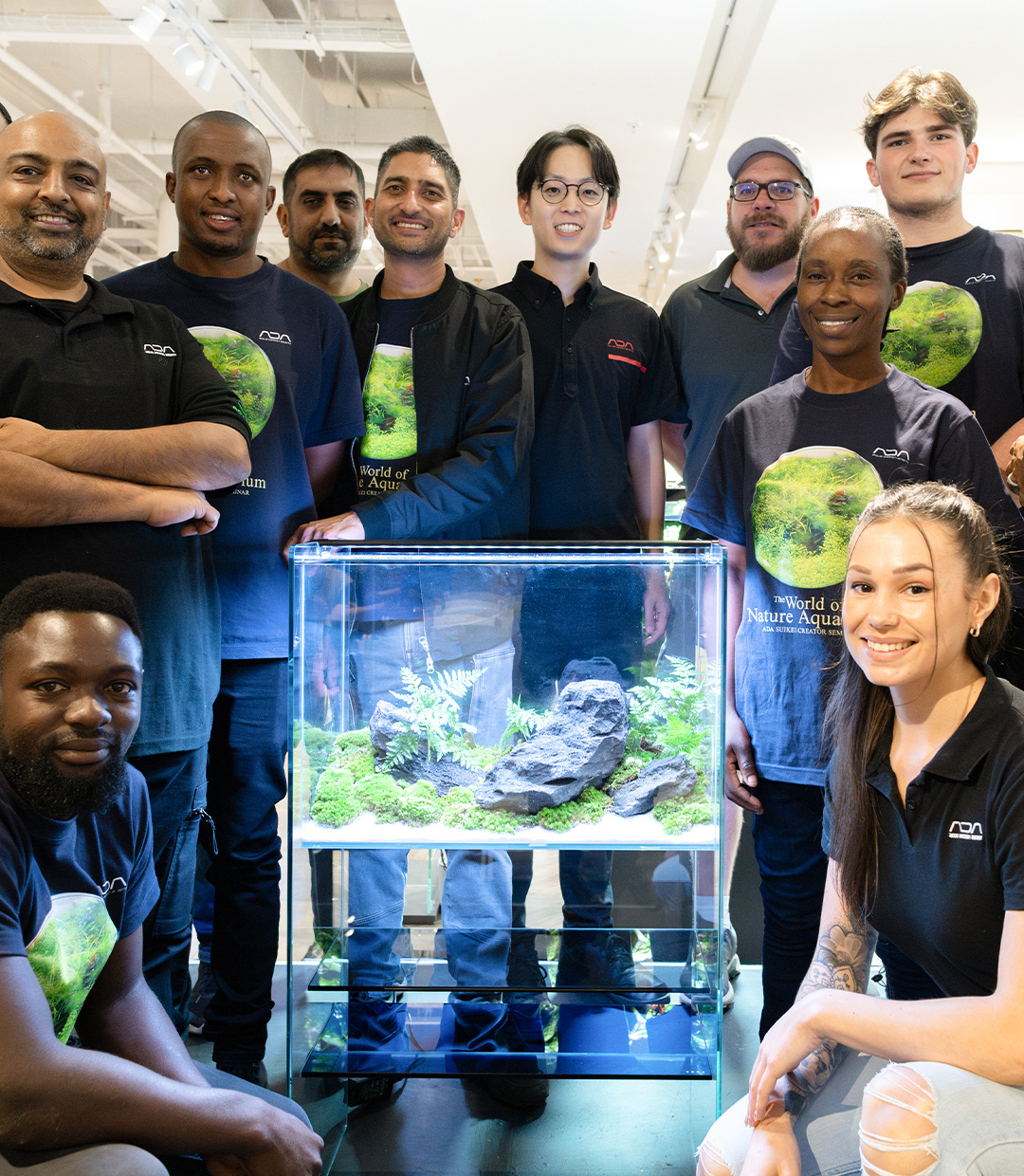
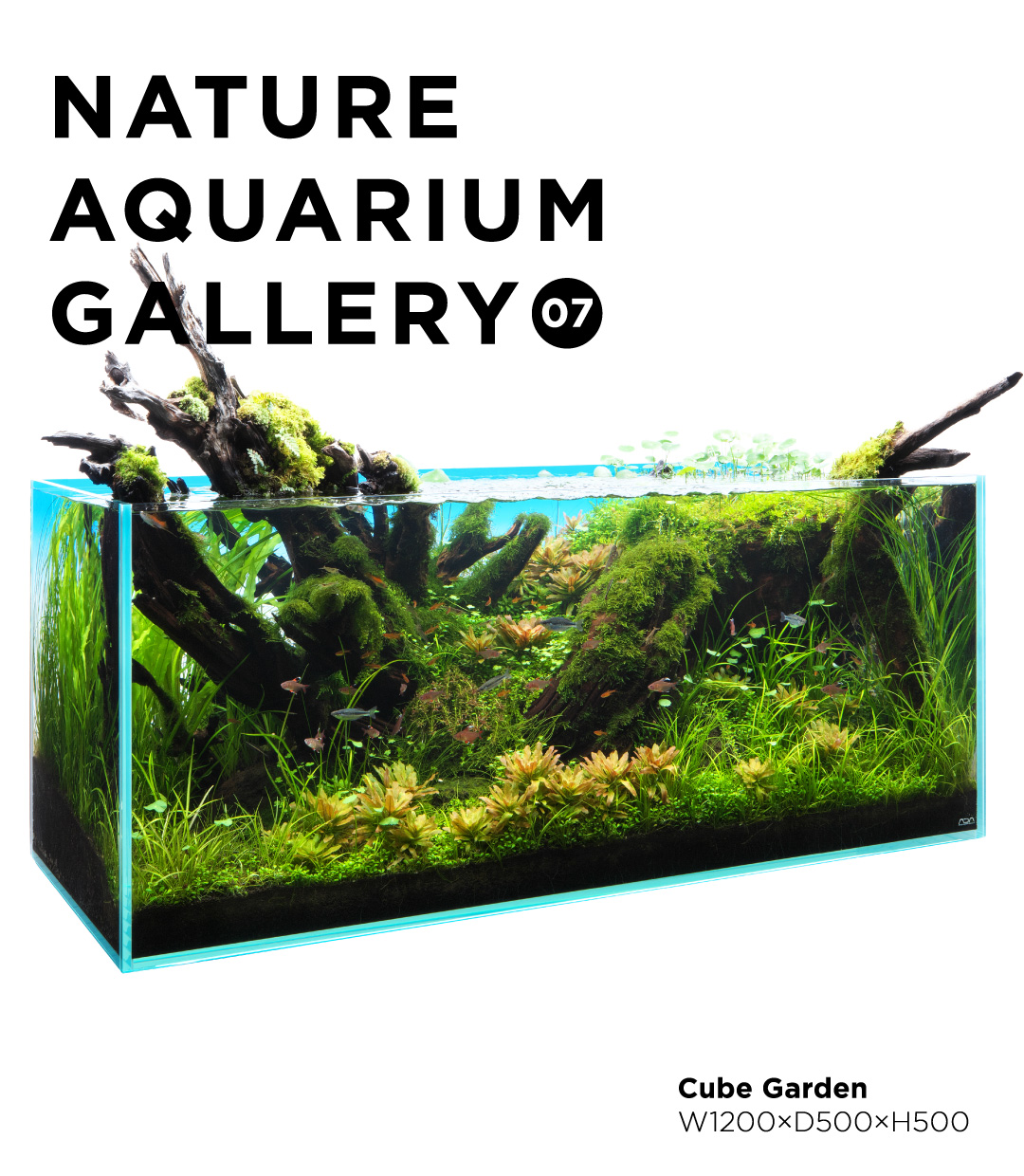
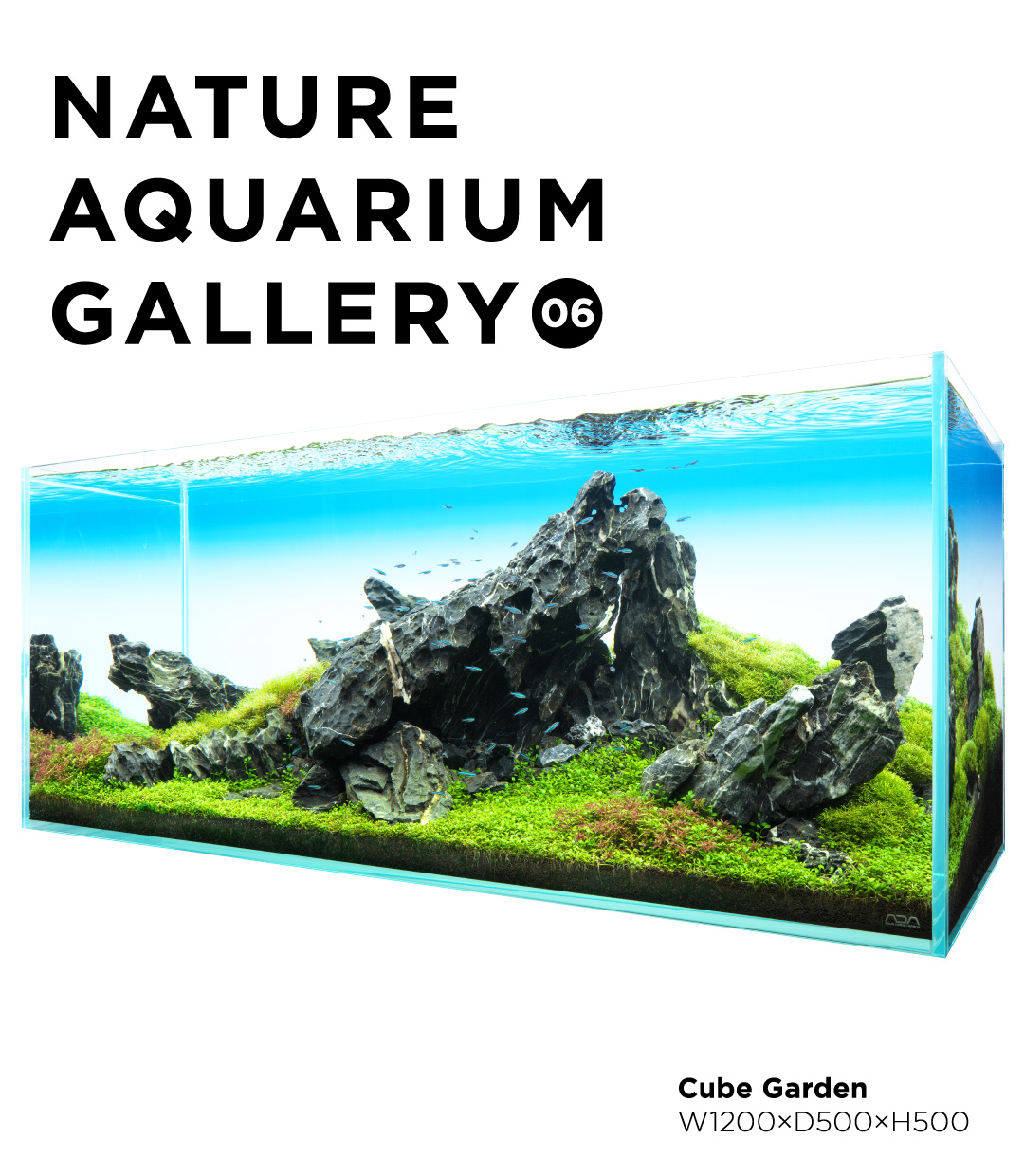
![Green Lab. #06 [ A Restful Waterside ]](https://www.adana.co.jp/wp-content/uploads/sites/3/2025/11/gl06_img_ogp.jpg)
